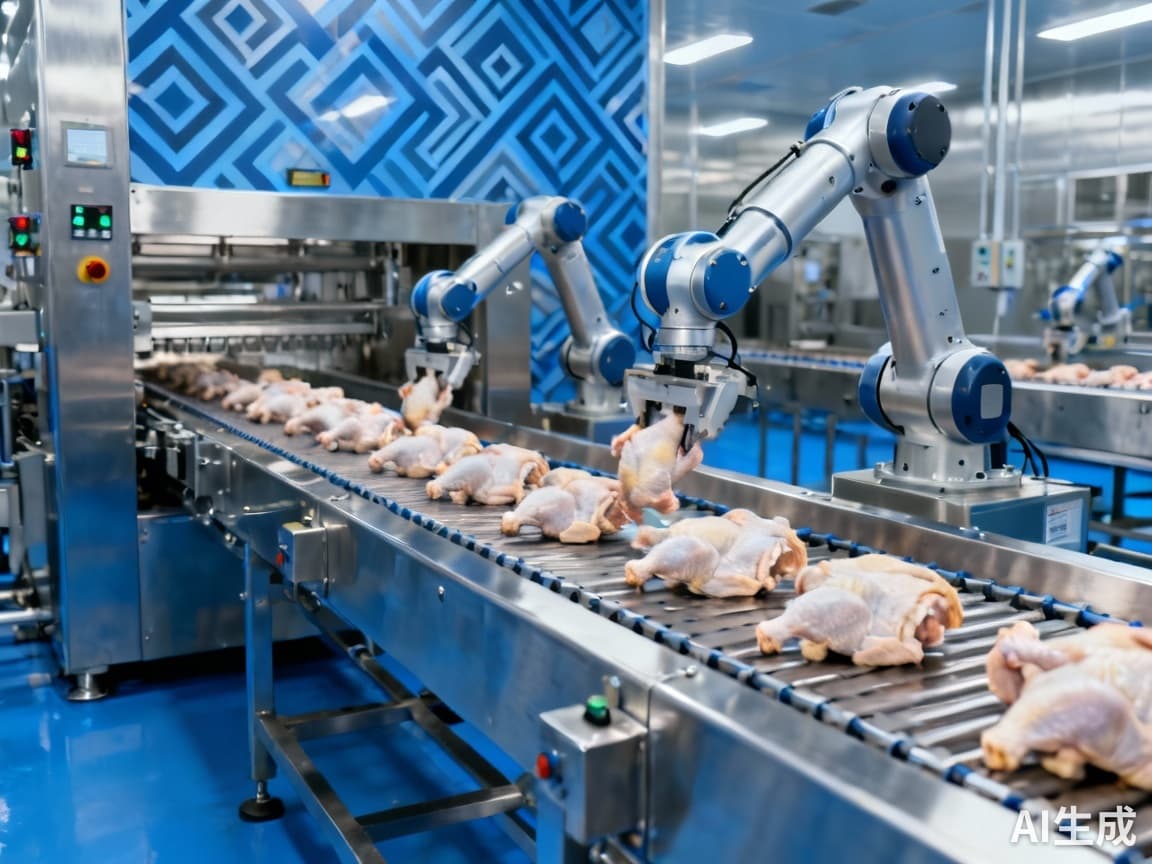Poultry Automation ROI: Achieve 4.7x Returns with Strategic Equipment Investment #8
Poultry automation delivers 4.7x ROI by transforming equipment into strategic assets. The automatic segment grows at 6.3% CAGR, projected to capture 48% market share by 2025, addressing labor shortages and boosting operational precision.

The Financial Architecture of Poultry Automation: Achieving 4.7x ROI Through Strategic Investment
Poultry producers face a critical financial decision: continue with traditional methods or embrace automation that delivers proven returns. While many discussions focus on technical specifications, the real transformation occurs in the financial architecture of poultry operations. Leading producers are achieving 4.7x returns on automation investments by treating equipment not as expenses but as strategic assets that generate measurable financial value.
Market Dynamics: The Automation Imperative
The poultry equipment market, valued at USD 4.5 billion in 2024, is projected to grow at a 4.7% CAGR through 2034, reaching USD 7.1 billion. This growth is fundamentally driven by automation, with the automatic segment forecasted to contribute 48.0% of market revenue share by 2025 and growing at 6.3% CAGR—significantly outpacing overall market growth.
The automatic equipment segment's 6.3% growth rate demonstrates how leading producers are prioritizing investments that address labor shortages, improve precision, and meet stringent hygiene standards while delivering superior financial returns.
The Financial Transformation Framework
From Cost Center to Strategic Asset
Traditional equipment purchasing viewed automation as a cost center. Forward-thinking producers now recognize automated equipment as capacity assets that generate ongoing returns. This shift in financial perspective is crucial for achieving the 4.7x ROI that industry leaders are realizing.
Investment Timing and Market Cycles
The 4.7% market growth rate creates optimal investment windows. Producers who align equipment purchases with market expansion cycles can maximize returns by capturing premium pricing opportunities while competitors struggle with capacity constraints.
Case Studies: Proven ROI in Action
Coleman Natural: Premium Pricing Strategy
When Coleman Natural faced the challenge of converting to higher animal welfare standards, they implemented a strategic automation investment approach:
- Built new facilities with enhanced automation and extra space
- Eliminated isolation stalls through automated monitoring systems
- Implemented automated feeding and environmental controls to maintain hormone/antibiotic-free standards
The results were transformative: Coleman achieved 5-10% price premiums and secured guaranteed purchasing agreements that completely offset conversion costs. Their experience proves that higher welfare production isn't more expensive on an ongoing basis—consumer premiums can effectively fund the automation transition.
UkrLandFarming: Scaling for Market Access
UkrLandFarming's expansion into European Union markets required production scaling that traditional methods couldn't support. Their automation investment enabled:
- Production increase to nearly 1.5 billion eggs in late 2024
- Compliance with EU quality and animal welfare standards
- Market access that would have been impossible with manual operations
The Four-Phase Implementation Roadmap
Phase 1: Financial Assessment
Begin with a comprehensive analysis of your current operation's financial metrics. Calculate your baseline production costs, labor expenses, and compliance costs. Use the 4.7% market growth rate to identify optimal investment timing that aligns with market expansion cycles.
Phase 2: ROI Modeling
Develop a detailed financial model that accounts for:
- Equipment costs and financing options
- Labor savings and reallocation opportunities
- Premium pricing potential (typically 5-10%)
- Compliance cost reductions
- Increased production capacity utilization
Phase 3: Phased Execution
Implement automation in stages to manage cash flow and minimize operational disruption. Start with high-ROI areas like automated feeding systems or environmental controls that deliver quick returns, then expand to more comprehensive systems.
Phase 4: Continuous Optimization
Establish metrics to track ROI continuously. Monitor equipment performance, maintenance costs, and production efficiency improvements. Use this data to justify additional investments and optimize existing systems.
Risk Management and Mitigation
While automation delivers exceptional returns, successful implementation requires addressing several key risks:
Technology Obsolescence Risk
With the automation segment growing at 6.3% CAGR, technology evolves rapidly. Mitigate this risk by selecting modular systems that can be upgraded and choosing suppliers with strong R&D commitments and upgrade paths.
Financial Risk Management
Structure investments to match cash flow generation. Consider equipment financing options that align payments with the ROI timeline. The 5-10% premium pricing demonstrated by Coleman Natural provides a cushion against implementation challenges.
Operational Transition Planning
Develop detailed transition plans that address workforce training, system integration, and production continuity. The experience of successful implementations shows that phased approaches with thorough testing at each stage yield the best results.
The 2025 Cage-Free Imperative
The push toward cage-free production creates both urgency and opportunity. With 2025 identified as a critical year for cage-free commitments and over 40% of US hens already cage-free as of March 2024, producers must act decisively. Major retailers including Walmart and Kroger have committed to 100% cage-free by 2025, creating a 121 million hen capacity gap that represents both challenge and opportunity.
Automation isn't just nice-to-have for cage-free transition—it's essential for managing larger flock sizes, maintaining welfare standards, and achieving the production efficiency needed to make cage-free operations profitable.
Conclusion: Building Your Automation Advantage
The financial case for poultry automation has never been stronger. With proven 4.7x ROI achievable through strategic implementation, forward-thinking producers are transforming their operations and financial performance. The key lies in treating automation as a strategic investment rather than a cost, following proven implementation frameworks, and leveraging the premium pricing opportunities that automation-enabled quality improvements make possible.
As the market continues its steady 4.7% growth and automation accelerates at 6.3%, the window for competitive advantage is open—but closing rapidly. Producers who act now will capture premium positioning, while those who delay will face both competitive and compliance challenges. The financial architecture of poultry farming is changing, and automation is at the center of this transformation.
Want to know more?
Get in touch with us for more information about our services and products.